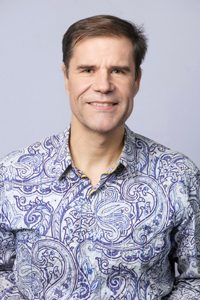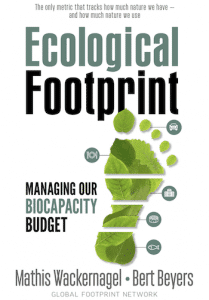
Why did you write “Ecological Footprint: Managing Our Biocapacity Budget” now?
Bill Rees and I wrote our first Ecological Footprint book in 1995 at a time when our resource-use estimates were still crude. The book summarized my Ph. D. dissertation, including a presentation of the basic premises of the idea as well as some basic applications. After this first book, I shifted strategy. I started to disseminate Ecological Footprint thinking through other organizations, including WWF, international agencies and national governments, to give it wider visibility and accelerate its mainstream adoption. Now, 25 years later, the time has come to provide an updated introduction to the whole approach. With a clear goal in mind: How to make Ecological Footprint accounting accessible, relevant, and fresh.
What are the main findings since you published the first Ecological Footprint book 25 years ago?
In 1995 we only had a rough estimate for Canada and an overly crude one for humanity. By 1997 we started to do more systematic national calculations. Global Footprint Network started in 2003 with annual updates for (nearly) every country on the planet and time series all the way back to 1961. Those accounts kept getting more and more refined. They are now so refined, as a matter of fact, that we gave them their own independent organization: www.FoDaFo.org. Back in 1995, I was expecting a faster evolution of the sustainability debate than we actually witnessed over the past 25 years. Furthermore, unsustainable trends have continued nearly unabated – from using 1.3 Earths in 1995 to using 1.75 Earths now. Most policy makers still miss or choose to ignore the fact that without resource security, humanity – and every country with it – is putting its own ability to operate at risk. And I am perpetually stunned to observe how hard it is to make this unavoidable reality obvious to wider audiences. So this has been a challenge we set ourselves: how can we make the need for resource security more obvious to diverse publics?
Can you share with us the key 3 take-away messages in this book?
- Biocapacity is the ultimate currency. Earth’s biological regeneration capacity is the most limiting of all material resources. That is why mapping all our demands against biocapacity not only makes sense but is imperative. Embracing this biological perspective allows us to clearly distinguish which strategies may be successful and which ones are doomed to fail.
- We live in unusual times. Our enormous dependence on fossil fuel seems normal to most of us. After all, “hasn’t it always been this way?” In reality, it is highly abnormal. Of all the fossil fuel ever burnt in the entire human history, 80% was burnt during my short lifetime. The book tells you how much was burnt during yours. It was 46% since Justin Bieber was born.
- It is the economy, stupid. That was Clinton’s presidential stump-speech. And he might be right on the money. In fact, we’ve been striving to make the case that embracing sustainability is economically superior and advantageous for humanity at large, starting with those who put their decision-making through a sustainability lens. Without this lens, we put our businesses, our cities, our countries even, into ever more inescapable traps.
What did you learn writing the book?
There is so much we want to tell, but ultimately including too much may not be helpful. It is more important to make the stories digestible. Bert and I challenged ourselves to translate complex ideas into examples that anybody could relate to. And to make sure the book is not just filled with theoretical ideas, but practical examples and applications. Also, when working on the acknowledgments, I started to realize how many people have contributed to this work. That is rather humbling. And I am particularly embarrassed about all the people I forgot to mention.
How confident are you that humanity’s Ecological Footprint can be brought in balance with Earth’s capacity to regenerate biological resources?
In this instance, I try to avoid thinking about probability – rather I focus on possibility. Is it possible to get out of ecological overshoot by design and not by disaster? The answer is a resounding yes. It is possible if enough people want to. It seems to me, however, that too few of us are convinced that we have personal “skin in the game” – that this context truly matters to our own lives. Fortunately, those high-schoolers boycotting school on Fridays around the world show us the way: they know that climate action is essential for their own ability to choose the life they want to live. They accuse the older generation for having failed them for a reason: too many decision makers – national and regional policy, large scale investments, urban planning – believe indeed that sustainability is merely a noble cause, not a necessary condition for prosperity. I’m afraid they are betting on the wrong horse. I predict that their blindness is undercutting their own chances at being successful. This book explains why.
MORE INFO ON “Ecological Footprint: Managing Our Biocapacity Budget“
Excerpts (brief and extended excerpts available)
Now you can buy copies directly from the publisher, your bookstores, or from any other distributor. We worked hard to keep the price low so the book is accessible to anybody. All royalties will help support Global Footprint Network.


